Serviceberry trees - disease or soil deficiency?
aliciaandbilly
8 years ago
last modified: 8 years ago
Featured Answer
Sort by:Oldest
Comments (7)
Related Discussions
Peach Tree Nitrogen Deficiency in October?
Comments (7)Contrary to the literature, I have not found post-Aug Nitrogen applications capable of stimulating new growth and even Aug applications only cause rank growth on branch tips- the rest of the tree seems to harden off in a manner unaffected by the late growth. I wish someone would do some research on this issue because I feel it is one of those things that gets repeated by academics without any specific research to back it up. Now, on your question, I agree with FN that there is no point in fertilizing now and also that it wouldn't hurt, might even help a tiny bit by getting some into the buds for a slightly quicker spring flush although I don't notice this affect on fall fertilizing of peaches. Probably just as well to wait until first growth in spring and then supply another application in early summer. With trees in potting soil it is easy for them to dry out when first transplanted and that could cause a quick change in leaf color- so it could just as well be too little water as too much. If finer soil around the coarse texture of potting soil is dry it will suck out any water from the potting soil by capillary pull drying it very quickly. At the same time, the coarser mix can't pull water from finer soil. This is a complication with planting potted trees. With peaches I find bare root trees tend to establish faster....See MorePole bean Problem: disease or deficiency??
Comments (4)Would application of magnesium via epsom salts show improvement in the problem leaves or cessation of additional leaves exhibiting the problem? If this is an ongoing problem, maybe you should have a soil test done. Not enough info in your posts for anyone to be able to tell you exactly what is wrong. You could be deficient in some mineral or have wrong ph or a disease or virus, you could be getting herbicide overspray, or salt from a road or driveway, maybe it's too hot and dry, maybe you have contaminated mulch applied, maybe you plant in the same place every year and a virus or disease has established itself there, maybe your vines are competing with tree roots, maybe you are planting varieties not suited to your climate, maybe you need innoculant. It could be a number of things. I try different things and see what works. If you think magnesium might help, try it. How could it hurt? Let us know what happens. Do you still get good beans every year? If you just want good beans to eat every year, I would not worry about leaf appearance. Lower leaves do die off as the plant grows, this is normal....See MoreDisease/Deficiency?
Comments (6)As is the case with a number of fungal problems, there are many different types of anthracnose and they tend to be extremely plant-specific. So anthracnose that affects liriope (Colletotrichum sp.) is not the same strain of anthracnose that affects certain species of dogwoods (Discula sp.). Therefore, your decision in choosing a dogwood should not be determined by having a problem with your liriope :-) There are a number of wonderful dogwoods that are very resistant to anthracnose - any of the kousas, all the Rutgers hybrids, 'Eddie's White Wonder' and a recently developed cultivar of the very popular Eastern dogwood, Cornus florida 'Appalachian Spring'. You should have no problems with any of these. I'd also agree with Rhizo and wonder at the reasons behind the development of a lot of fungal problems. Generally that would indicate a situation that had poorly draining soil combined with excess or improper irrigation practices. Or it could be something as simple as the wrong plant for that particular spot. It's worth examining a bit more closely to see if some simple adjustments can be made that would relieve the problem....See MoreSeeking Advice - Disease, Nutrient Deficiency, or Something Else?
Comments (5)These cuttings are growing next to a south-facing window at roughly room temperature. Early on, however -- maybe for the first week -- I did not place them in direct sunlight, since I did not want them to wilt for lack of roots. The soil is light with sufficient drainage. To note, the plants are now well rooted; I can see the roots through the sides of their transparent containers. At the same time, the yellowing seems to have ceased to spread for the most part, so perhaps this means it initially resulted from a nutrient deficiency. However, I still wonder whether the lack of nutrients directly caused chlorosis, or whether the deficiency made the plants more susceptible to a disease which in turn brought about the yellowing. Diane, thank you for enlightening me on the nomenclature....See Morealiciaandbilly
8 years agoaliciaandbilly
8 years agolast modified: 8 years agoRugbyHukr
8 years agoaliciaandbilly
8 years ago
Related Stories
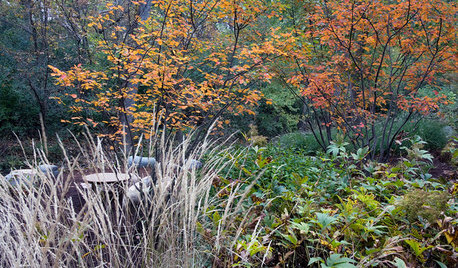
TREESGreat Design Plant: Downy Serviceberry
Plant this sculptural tree in fall or spring for year-round interest and graceful beauty
Full Story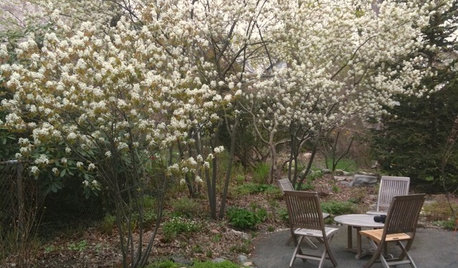
GARDENING GUIDESGreat Design Plant: Amelanchier Signals Spring With Airy White Blooms
With roughly 20 species of serviceberry native to the U.S., bees can feed on the early-season blooms while birds enjoy the summer berries
Full Story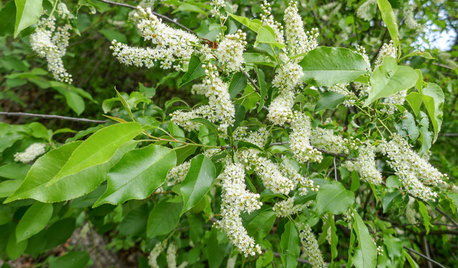
GARDENING GUIDESPlant Black Cherry Trees for the Birds and Bees
Plant Prunus serotina in the Central and Eastern U.S. for spring flowers, interesting bark and beautiful fall color
Full Story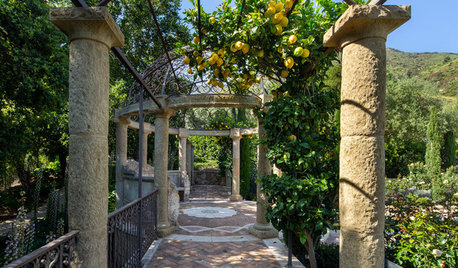
GARDENING GUIDESHow to Keep Your Citrus Trees Well Fed and Healthy
Ripe for some citrus fertilizer know-how? This mini guide will help your lemon, orange and grapefruit trees flourish
Full Story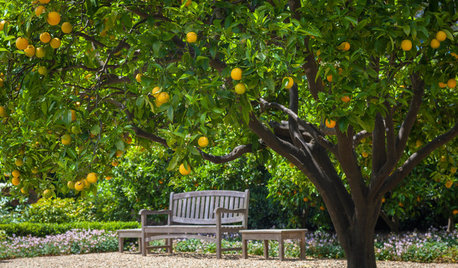
EDIBLE GARDENSHow to Grow 10 Favorite Fruit Trees at Home
Plant a mini orchard in fall, winter or early spring to enjoy fresh-off-the-tree fruit the following year
Full Story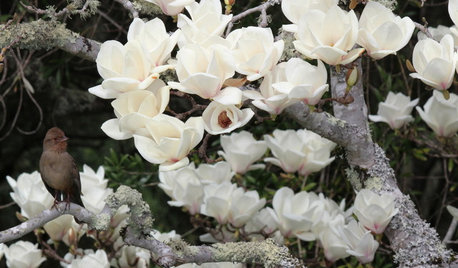
SPRING GARDENING7 Spectacular and Practical Spring-Flowering Trees
Put on a beauteous show in the garden with a landscape tree awash in flowers — just do your homework first
Full Story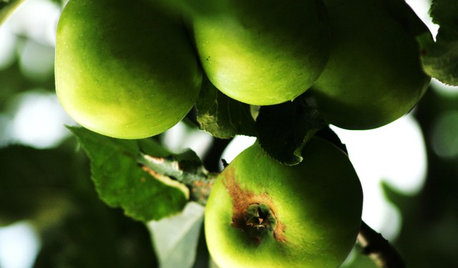
EDIBLE GARDENSHow to Add an Apple Tree to Your Edible Garden
Readily available, beautiful and fragrant, apple trees offer four-season interest along with crisp, juicy fruit
Full Story
FALL GARDENING11 Trees for Brilliant Fall Color
Give your landscape the quintessential look of autumn with the red, orange and yellow leaves of these standouts
Full Story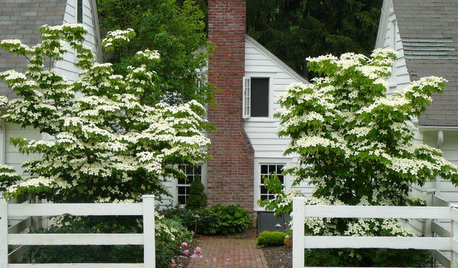
TREES7 Deer-Resistant Flowering Trees to Plant this Fall
If you live in a neighborhood with roaming deer, consider these beautiful trees that won't tempt hungry guests
Full Story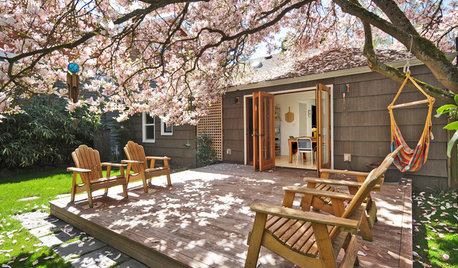
ARBOR DAY8 Reasons to Plant a Great Tree
Beauty is its own reward, but the benefits of planting the right tree in the right place go way beyond looks
Full Story



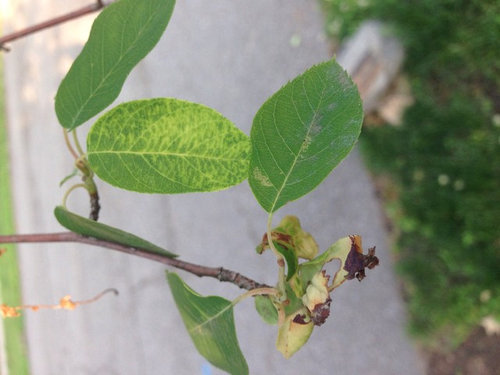



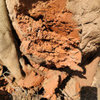
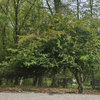
ken_adrian Adrian MI cold Z5